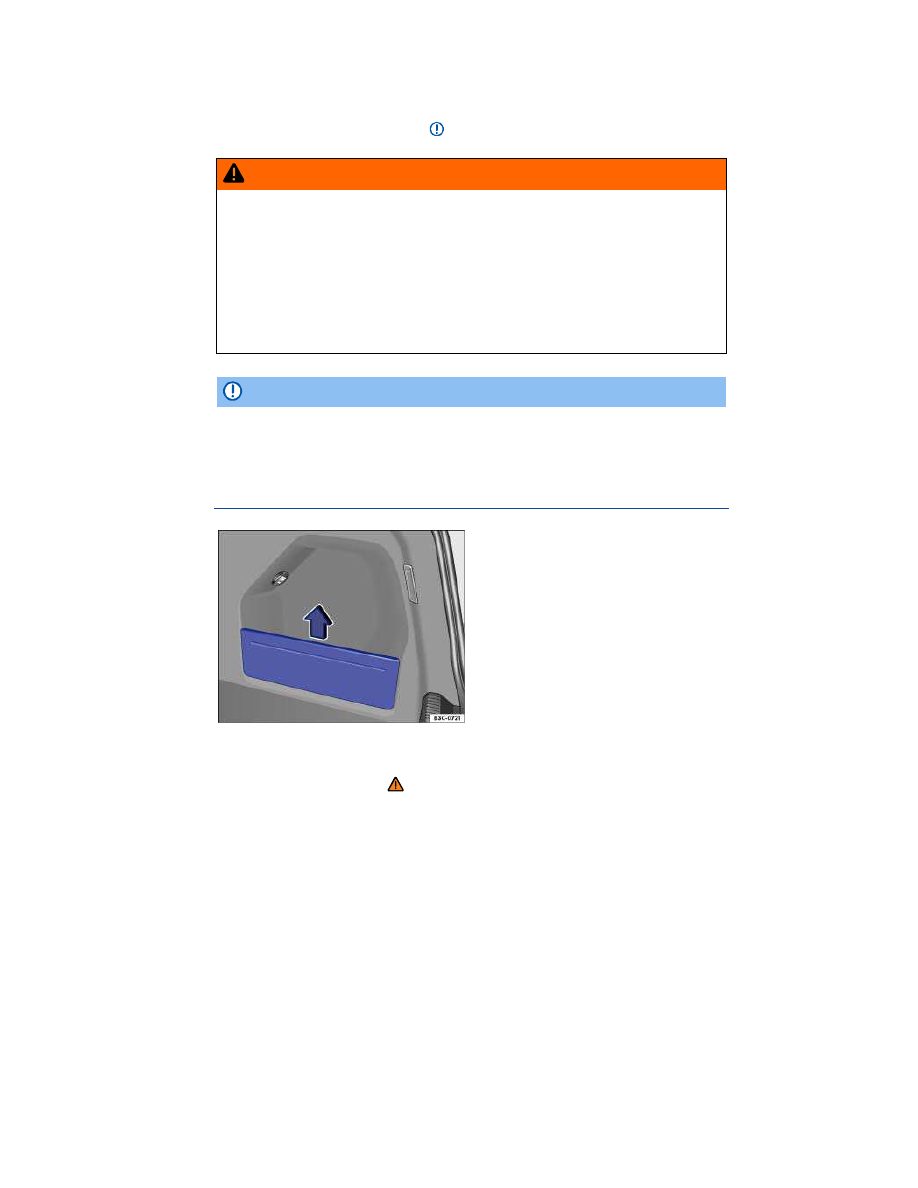Volkswagen CC (2015 year). Instruction - part 19

Opening or closing the center armrest storage compartment
To open, press the button ⇒
fig. 126
(small arrow) when the center
armrest is folded down and then open the cover upward.
To close, fold the lid down ⇒ .
WARNING
The center armrest must always be folded up and the storage
compartment and cup holders closed to reduce the risk of inju-
ries when the vehicle is moving.
Never let anybody, especially children, ride on the rear center
armrest or in the center position on the rear seat when the arm-
rest is folded down. An improper seating position can increase
the risk of serious injury in a crash.
Close the storage compartment only if no one is in the way.
NOTICE
Do not press on the cup holder cover when raising the center
armrest. The cup holder could open and be damaged.
Other storage compartments
Fig. 127 In the luggage compartment: Side storage compartment.
Please first read and note the introductory information and
heed the WARNINGS